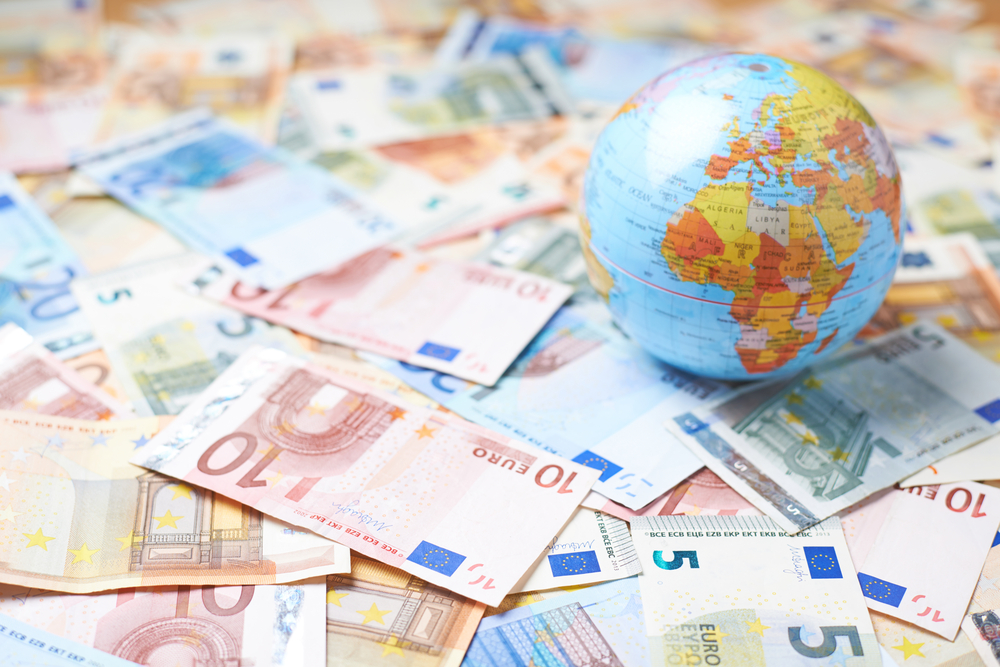Is 2023 already the year of international stocks?
It may well be.
Consider that international stocks (excluding U.S. stocks) are up more than 8% this year, as measured by the iShares MSCI ACWI ex U.S. ETF (Nasdaq: ACWX). (ACWI stands for All Country World Index.)
U.S. stocks, as measured by the S&P 500 Index, are up about 4.7% as of this writing.
And the uptick is even bigger if you measure the performance of international stocks since my September 19 Liberty Through Wealth column.
That’s when I told readers that they might be neglecting this huge, often-overlooked group of stocks.
Since that article ran, international stocks have risen about 14.5%, while U.S. stocks are up less than 3%. Most of that gap between the two groups has appeared since mid-December.

So why are non-U.S. stocks surging?
A few reasons…
Reason No. 1: Valuations Favor International Stocks
First of all, many smart investors are bargain hunters. They look for undervalued stocks – where a stock’s price doesn’t reflect its full underlying value or potential.
That’s been the case with international stocks for a while now.
Back in mid-September, Yardeni Research computed that the forward price-to-earnings ratio for U.S. stocks was 17.1, while EAFE stocks – which include stocks in Europe, Australia, New Zealand and Japan – were trading at just 12 times forward earnings. Meanwhile, emerging market stocks were even cheaper, at 11.2 times forward earnings.
Reason No. 2: The Dollar’s Reversal
The U.S. dollar was trading at multiyear highs against other major currencies. When that happens, U.S. goods and stocks don’t get cheaper for Americans, but imports do. And for those of us in the U.S., international stocks are basically imported goods, so a strong dollar can buy more of them.
Apparently, investors began to recognize the bargains among international stocks and took advantage of the buying power of the greenback. That’s pushed international indexes up in recent months.
The dollar has recently receded in value against other currencies, mainly because the Federal Reserve has signaled it will soon slow or halt its interest rate increases – and currency strength often mirrors the direction and pace of interest rates.
Reason No. 3: Two Unexpected Boosts
A warmer-than-expected winter in Europe is mitigating the damage the Russian energy crisis is having on the continent and its economies.
Also, the Chinese economy has finally begun to reopen, giving investors hope that stocks there can rebound.
Sure, U.S. stocks have dominated on returns in recent years. They outperformed international stocks in 10 of the last 12 years, according to Morningstar.
But that’s merely a recent phenomenon.
In fact, international stocks have outperformed U.S. stocks during nearly half of all 10-year rolling periods over the last 50 years, according to Morningstar and BlackRock.
That’s exactly why Chief Investment Strategist Alexander Green advises that a well-diversified portfolio – like his acclaimed Gone Fishin’ Portfolio – should be 30% allocated to foreign and international stocks.

Because, as Alex has said, when U.S. stocks zig, international stocks tend to zag. Put differently, the two groups of stocks don’t move in tandem, and that’s exactly what you want in a diversified portfolio.
And there’s still time to gain more exposure, considering that international stocks remain cheap relative to U.S. shares, according to Yardeni Research. Consider…
- U.S. stocks are now trading at 17.7 times forward earnings.
- Global stocks (excluding the U.S.) are trading at 12.4 times earnings.
- European stocks are trading at 12.2 times earnings.
- Japanese stocks are trading at 12.1 times earnings.
- Emerging market stocks – representing a huge range of countries, from China to Brazil – are trading at 12 times earnings.
To give your own portfolio more exposure to stocks of companies headquartered outside U.S. borders, try these exchange-traded funds (ETFs):
- The iShares MSCI EAFE ETF (NYSE: EFA), which tracks the performance of large cap and midcap stocks in developed countries around the world, excluding the U.S. and Canada. The index is made up primarily of stocks from Japan, the United Kingdom, France, Switzerland and Australia.
- The iShares MSCI EAFE Value ETF (CBOE: EFV), which mirrors the performance of stocks in developed countries (excluding the U.S. and Canada) that trade at a discount to other stocks in their industries (that makes them value stocks).
- The iShares MSCI Emerging Markets ETF (NYSE: EEM), which tracks an emerging markets index that is heavily invested in Asian tech stocks, like Taiwan Semiconductor Manufacturing (NYSE: TSM), Tencent Holdings (OTC: TCEHY) and Samsung Electronics (KRX: 005930) – all of which are up by double digits this year.
Those ETFs should allow you to benefit from growth in other parts of the globe.
